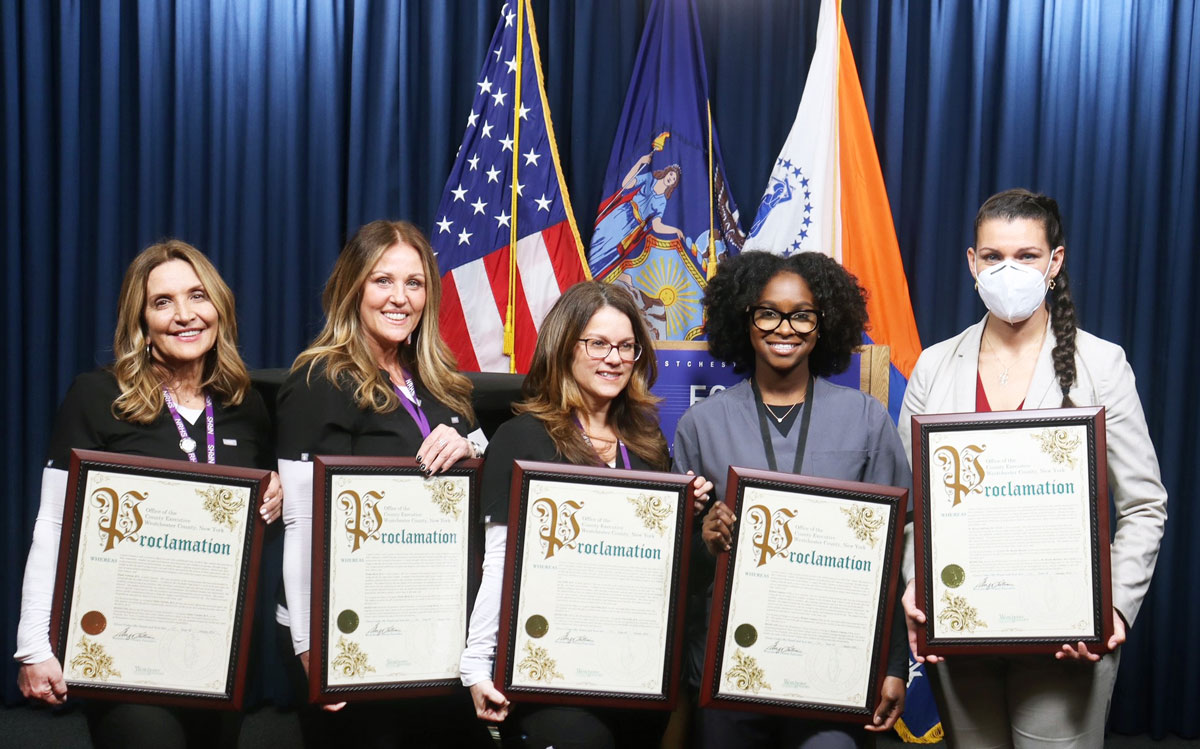New Rochelle incident highlights critical role of school nurses
hen the student arrived in the nurse’s office at New Rochelle High School, the complaint was the same as most every other person who turns up there: they did not feel well.
However, it soon became clear that this was no run-of-the-mill malady.
Wendy Miceli, a registered nurse and member of New Rochelle Federation of United School Employees, recalled that the student was disoriented, frightened and admitted to using a vape cartridge.
With the assistance of her colleagues, Miceli took the student to an exam room. “I took the vitals, which were unstable,” Miceli said. She decided to call 911. In the time it took for her to cross the office and dial 911, the student lost consciousness.
Concerned that the student might have ingested an opioid, Miceli and her colleagues administered naloxone, an overdose reversal medication. The medication immediately revived the student, who was then taken to the hospital, and is now, fortunately, recovering safely at home.
The key takeaway for Miceli and her colleagues?
“It is imperative that our schools have adequate staffing, and that includes professionally trained nurses,” said Miceli.
Marie Claire Breslin, president of New Rochelle FUSE could not agree more. “The health of our students and staff should be the highest priority,” she said. “School nurses are essential to staying safe and healthy at school.”
And yet, school nurses are not required by law. State law requires one medical director to oversee the health plans for the whole district, but it does not require schools to keep a nurse on staff.

Provided
The New Rochelle High School nursing team, which includes four FUSE members, from left, registered nurses Diane Vetrano, Wendy Miceli and Lisa Grillo, and CNA Kymora Cameau, is honored for their work by the Westchester County Executive George Latimer. Dr. Brooke Balcham, far right, medical director for New Rochelle schools, was also recognized.
The changes to education law in the 1970s and 1980s, which helped mainstream more students, also put students with complex health problems into the general public school population and increased the need for highly trained medical staff at schools.
Today’s school nurses are not only applying Band-Aids and swabbing insect bites; they are attending to seizures, diabetes, tube feedings, catheterization and more, Geisel said.
At New Rochelle, the nursing team splits their day between caring for students with chronic conditions and assisting students with other health issues. Even with three nurses plus one part time certified nursing assistant on staff, the workload is intense, Miceli said.
New Rochelle High School is home to 3,260 students; that is one nurse for every 1,086 students, and many of those students have health concerns.
“We have lots of students with chronic illnesses here,” said Miceli. “We have 24 students with diabetes. Some of our students have seizure disorders, sickle cell disease. Not to mention all the colds and COVID. It has been a terrible year for RSV, too.”
According to the National Association of School Nurses, access to registered professional nurses all day, every day at school improves student health, safety and educational achievement. However, when it comes to setting appropriate staffing levels, guidelines have varied over the years. In 2011, the association stated that 750 students per nurse was appropriate. In 2020, the association revised their guidelines, stating that appropriate ratios depend on student health conditions, social determinants and other factors.
NYSUT supports legislation to require a school nurse in every building. Geisel said that most families assume their children will be cared for by a registered nurse during the school day. “Most parents are shocked when I tell them it’s not mandated,” she said. “I don’t think it’s widely known by the general public.”